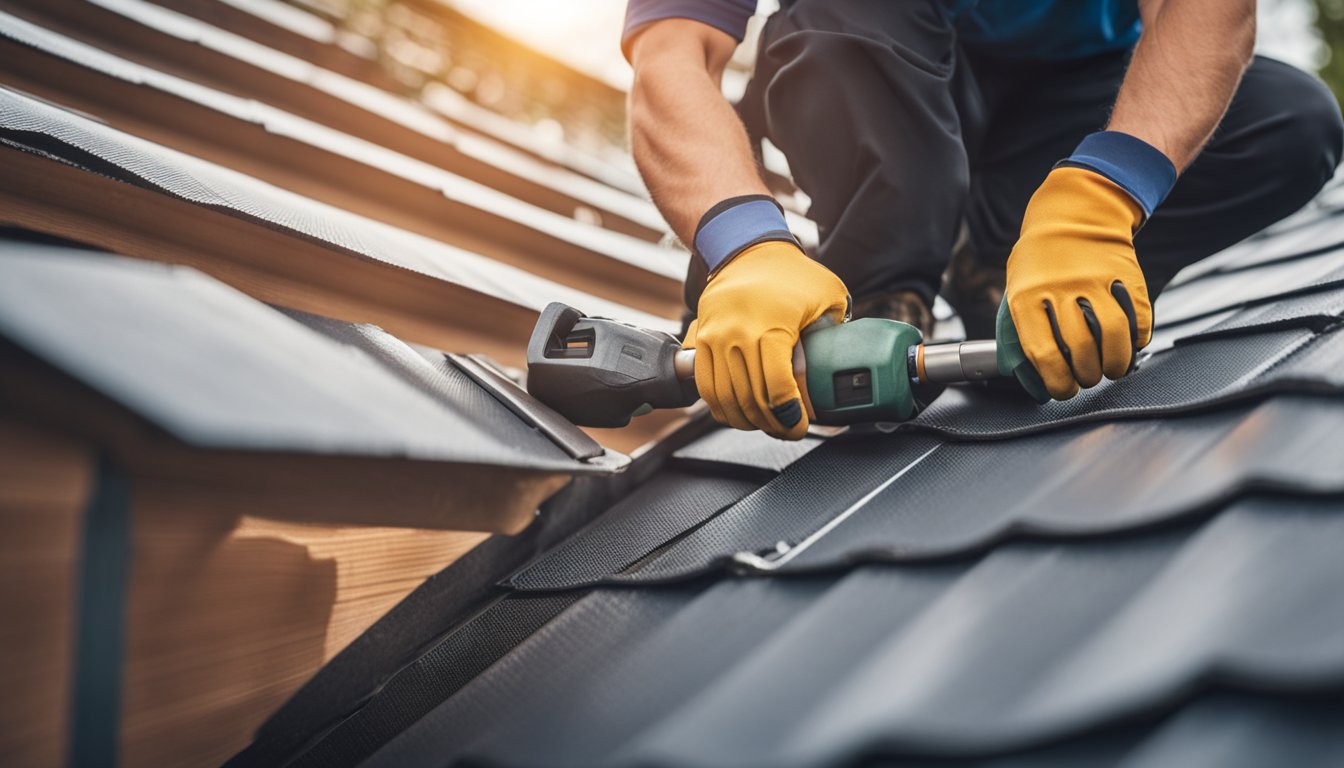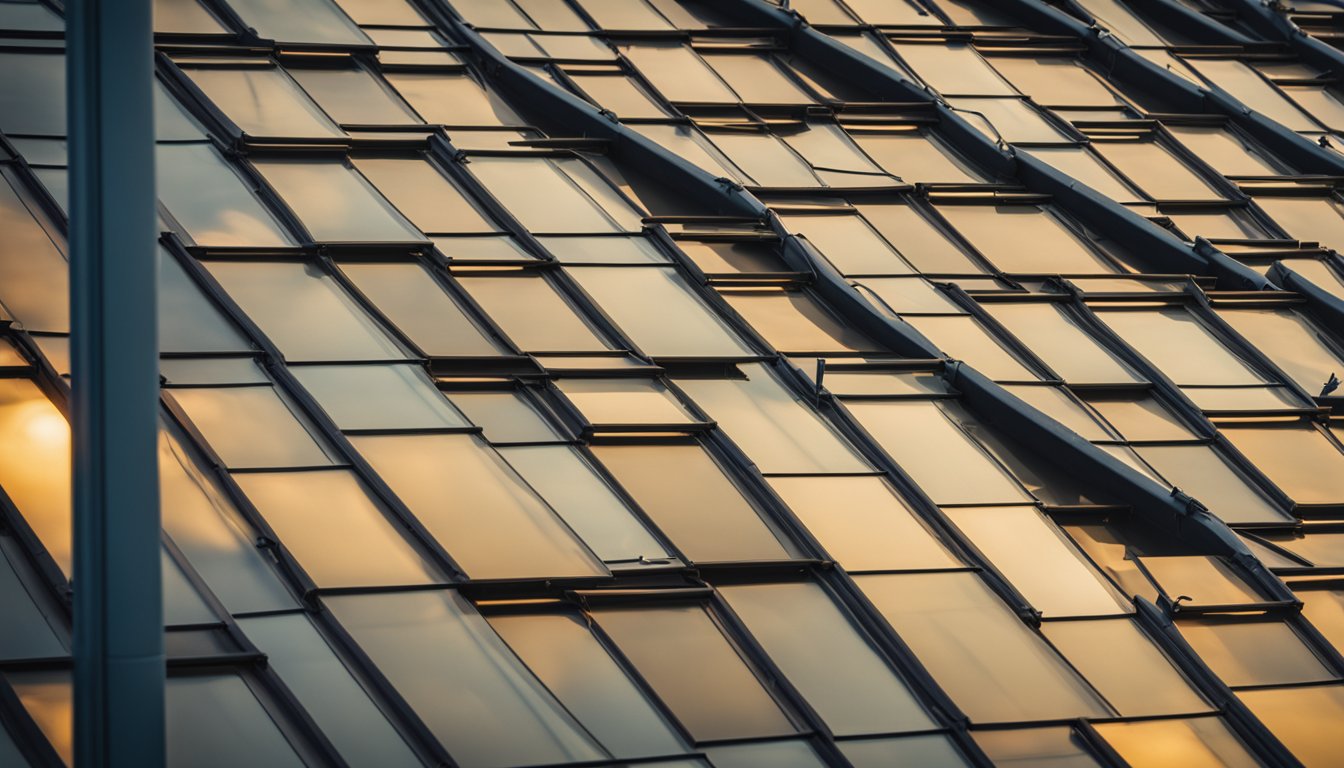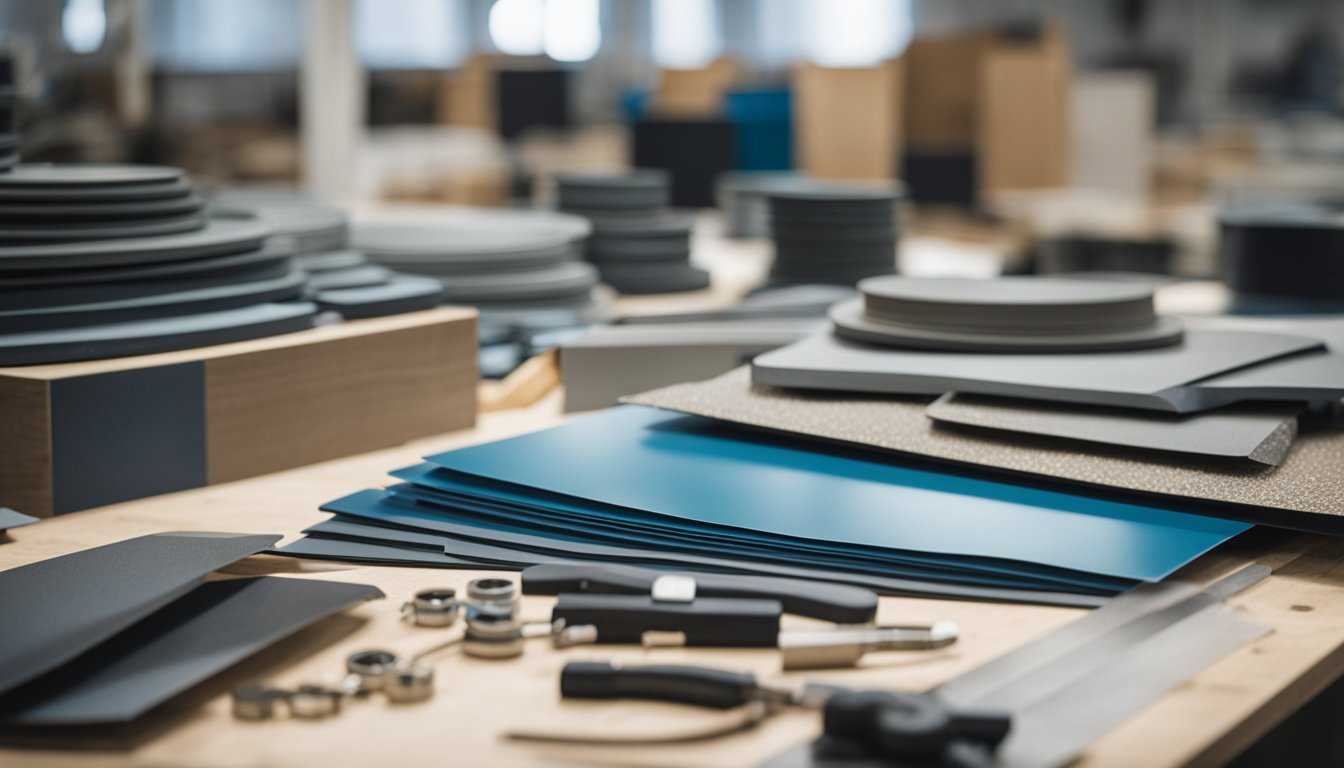Late updated: 05 Oct 2024 09:10
Written by: Oliver Bennett
Exploring Modern UK Roofing Materials and Techniques: An Expert Overview
The UK roofing industry is a fascinating blend of tradition and innovation, offering a diverse range of materials and techniques that cater to modern needs. Whether you're considering sleek, contemporary designs or sustainable, eco-friendly options, the choices available in today's market are both versatile and functional. Our exploration of these modern roofing materials reveals advancements that enhance energy efficiency and reduce environmental impact.

Metal roofs, for example, are increasingly popular due to their durability and minimal maintenance needs. These materials not only withstand extreme weather conditions but also offer long-term cost savings. Meanwhile, the design aspect of roofing has embraced minimalism, with modern construction techniques allowing for more creative and efficient solutions tailored to individual architectural styles.
As we delve into this topic, we aim to provide insight into the latest trends and innovations reshaping the roofing landscape in the UK. Join us as we navigate these exciting developments and discover the various options that can transform the visual and functional aspects of your property.
Key Takeaways
- Modern roofing materials improve energy efficiency and sustainability.
- Versatile designs cater to aesthetic and functional needs.
- Innovative techniques enhance durability and cost-effectiveness.
Innovations in Roofing Materials and Their Properties

Modern roofing in the UK is marked by the integration of both traditional and advanced materials. Innovative techniques have increased durability, improved energy efficiency, and enhanced environmental sustainability. Let’s examine these innovations to understand their transformative impact on roofing solutions.
Advancements in Traditional Materials
Traditional materials like slate, clay, and concrete tiles have evolved to meet contemporary needs. Slate roofing is prized for its durability and aesthetic appeal. New treatments enhance its waterproofing* properties, ensuring longevity.
Clay tiles, known for their thermal efficiency, now come in lighter variants, reducing structural load. Concrete tiles have been reinforced to increase impact resistance, offering better protection against harsh weather conditions. These improvements maintain the historic charm while embracing modern performance requirements.
Rise of Sustainable and Synthetic Solutions
Environmental concerns have driven the rise in sustainable roofing options. Green roofs have become popular, providing natural insulation and promoting biodiversity. This type of roofing system helps in reducing urban heat and manages stormwater effectively.
Synthetic roofing materials, such as fibreglass and rubber roofing, offer cost-effective solutions with excellent durability. They can also mimic traditional materials’ appearance while being lighter and easy to install. Many options employ recycled content, contributing to environmental sustainability and reducing raw resource dependency.
Integrating Renewable Energy
The integration of renewable energy into roofing materials has gained momentum. Solar shingles and solar roofs are at the forefront, merging seamlessly with traditional roofing aesthetics. They offer a dual function of protection and energy generation.
Installing solar panels on existing roofs has become simpler, with innovations in lightweight and flexible panels that adapt to various roof types. These installations not only reduce energy bills but also contribute to renewable energy production in residential areas. This shift supports sustainable housing practices and aligns with the UK's energy policies.
Together, these advancements in roofing material innovation significantly impact our approach to building design, with a focus on sustainability and efficiency.
Contemporary Roofing Designs and Techniques
Innovative roofing solutions are being integrated into modern architecture, balancing aesthetics with functionality, eco-consciousness, and cost-effectiveness. Our focus is on current trends that harmonise with contemporary designs while ensuring sustainability and practical benefits.
Adapting to Modern Architectural Trends
Today's architectural design demands roofs that contribute to the overall aesthetic of buildings. Flat roofs are notable for their sleek, minimalist appeal, often used in urban developments for their ability to support additional living spaces or gardens. Metal roofing is gaining traction due to its durability and flexible design options, offering a modern touch to properties.
The adaptability in roof design allows architects to integrate advanced materials and technologies, ensuring weather resistance and energy efficiency. Contemporary architecture frequently employs these roofing techniques to create striking, yet practical structures suitable for various climates and environments.
Eco-Friendly Approaches in Roof Construction
Eco-friendly roofing has become an essential aspect of sustainable building practices. Green roofs, or living roofs, feature vegetation layers that promote biodiversity and reduce the carbon footprint of buildings. This type of roofing aids in improving air quality and insulating structures, resulting in significant energy savings.
Solar roofing is another environmentally friendly option, integrating energy-producing solar panels into the roofing design. This approach not only decreases reliance on conventional energy sources but also provides long-term cost savings. By investing in green roofing solutions, we contribute to an environmentally sustainable future.
Practical Considerations for Property Owners
When choosing contemporary roofing designs, property owners must consider durability, maintenance requirements, and costs. Metal roofs are particularly appealing for their low maintenance and longevity. Although the upfront cost might be higher, the long-term savings in maintenance and energy efficiency can be substantial.
Flat roofing, known for its economical and versatile attributes, provides practical solutions for various building types. It's crucial to evaluate the local environment and specific needs of the property to select the most appropriate roofing design. By doing so, property owners ensure that their investment enhances both their building's value and its aesthetic appeal.
Frequently Asked Questions

Modern roofing in the UK involves a diverse range of materials and techniques. From metal and slate to sustainable options, these choices reflect current innovations and design trends while providing solutions for weather resistance and environmental concerns.
What are the predominant materials used in modern British roofing?
In today's UK roofing landscape, materials like aluminium, steel, and copper offer durability and a sleek, contemporary look. Traditional options such as slate remain popular for their timeless appearance and longevity. We also see an increased use of sustainable materials including recycled metals and natural products.
Which styles of roofs are commonly found on UK homes today?
Contemporary homes in the UK often feature flat roofs with modern, minimalist designs. Traditional pitched roofs remain prevalent, accommodating the country's varied architectural styles. Green roofs and roofs with solar panels are also becoming more popular as homeowners seek ecological and energy-efficient solutions.
How do current roofing practices in the UK differ from past techniques?
Recent advancements have introduced more sustainable and efficient materials and methods, moving away from purely traditional techniques. The integration of technology in design and construction, such as computer-aided design (CAD), has revolutionised the approach to roofing projects in the UK, allowing for precision and innovative solutions.
What innovations have influenced contemporary roofing construction in the UK?
Modern roofing innovations include the use of advanced software for planning and sustainable materials like reclaimed metal and eco-friendly composites. These advancements offer improved energy efficiency and environmental benefits. Additionally, reflective coatings and insulated roofing systems contribute to energy conservation and reduced carbon footprints.
Can you outline the benefits of using sustainable roofing materials in the UK?
Sustainable roofing materials reduce environmental impact by decreasing reliance on non-renewable resources and minimising waste. These materials can enhance energy efficiency, potentially lowering heating and cooling costs. They often require less maintenance, contributing to long-term savings and a reduced carbon footprint.
What roofing solutions are available for weather-resistant construction in Britain?
Britain's climate necessitates robust roofing solutions to withstand rain, wind, and temperature changes. Durable materials like metal and slate offer significant resistance to harsh weather conditions. Innovative coatings and waterproof membranes are also employed to enhance the longevity and effectiveness of modern roofing systems.
